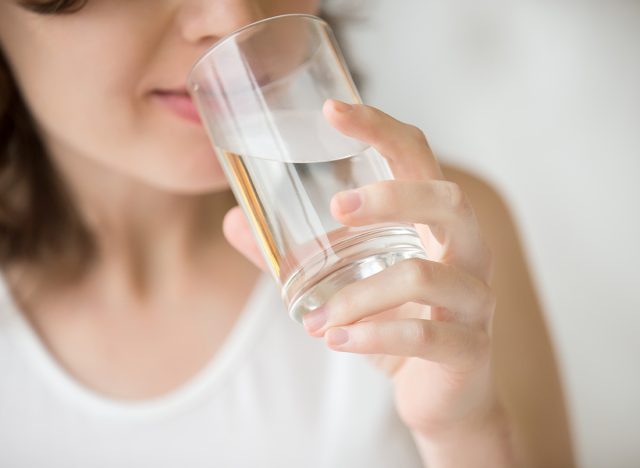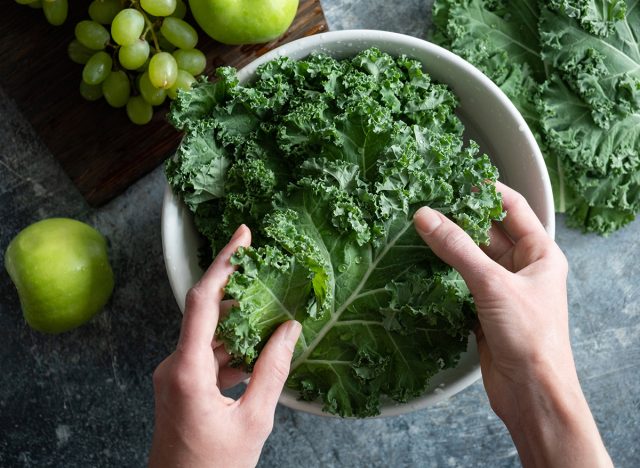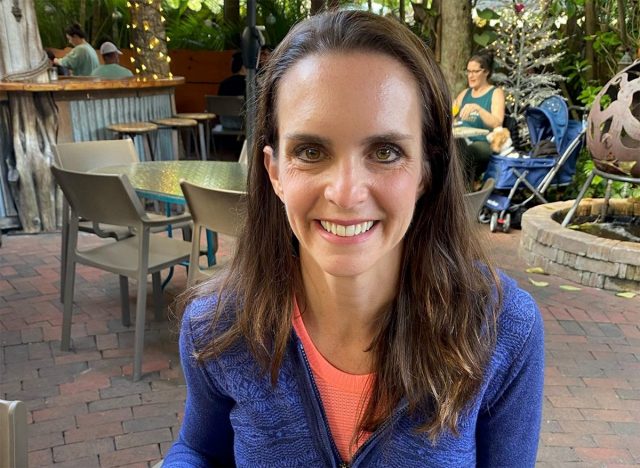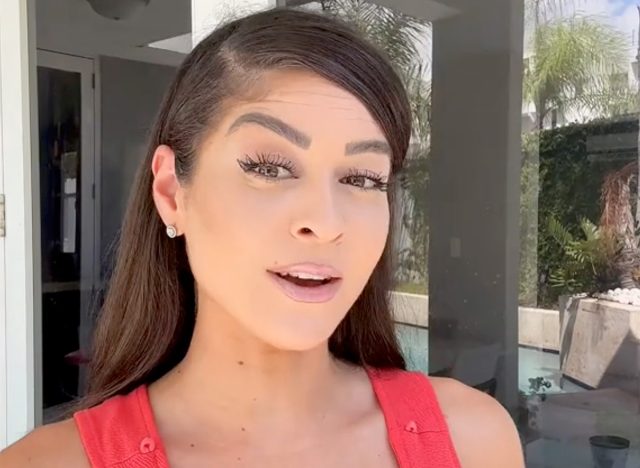3 Easy Ways to Cut Out Sugar, According to Expert
Should you cut sugar out of your diet? Christina Hedges (@christina_hedges) is an influencer and online health coach with hundreds of thousands of followers across various platforms. In her videos, she teaches her followers about health habits and tips to help with everything from weight loss to improving digestion. In one viral video, she reveals how to "cut out the sugar" from your diet in just two weeks. We also enlisted the help of The Diet Diva, Tara Collingwood, MS, RDN, CSSD, LD/N, ACSM-CPT, a Board Certified Sports Dietitian to weigh in on her suggestions – and you might be surprised by her response.
Avoid All Simple and Most Complex Carbohydrates, She Recommends
@christina_hedges If you want to cut out sugar- heres how #sugar #sugaraddict #nosugar #cravings ♬ original sound – Christina Hedges
"Disclaimer, this will be challenging and not for everyone," she warms at the start of the clip. "Avoid all simple carbohydrates and most complex carbohydrates. For now, this includes fruits as they're high in sugar, except for avocados and berries," she says.
Here Is Why Carbohydrates Are Bad, She Says

"Carbohydrates are glucose molecules put together differently. And as you know, the body has two forms of energy, fat, and carbohydrates," she continues.
Related: 15 Quick Ways to Lose Body Fat Percentage in a Week
You Need to Drink Lots of Water

"So what can you eat here?" She suggests starting by drinking "plenty of water, avoiding soda, juice, and coffee with cream or sugar."
She Suggests Eating These 12 Foods

She goes on to list "12 foods with little to no sugar," starting with greens. "Organic kale with zero grams of sugar. Red meat such as beef, lamb, and organ meats with zero grams of sugar. Wild salmon with zero grams of sugar, chicken with zero grams of sugar, coconut oil, or extra virgin olive oil with zero grams of sugar. Pure butter with 0.1 grams of sugar per a hundred grams sauerkraut with 0.1 grams of sugar per ounce cheese with zero to 0.4 grams of sugar per ounce. Avocados with 0.4 grams of sugar eggs with 0.6 grams of sugar vegetables such as the ones listed above with zero grams of digestible carbs. Lastly, berries with four to 10 grams of sugar per a hundred grams," she says.
RDN Disagrees and Calls This "Unsustainable"

Collingwood is not on board with Hedges' advice. "This is not sustainable or healthy," she says. "The diet recommended here is pretty strict and is eliminating entire food groups and way too low in carbohydrates to be healthy or sustainable."
Related: Sadie Rigby in Workout Gear Reveals "How to Lean Out"
Cutting Out Added Sugar Is Fine

"Cutting out added sugar is fine and there is no negative to doing it other than just maybe going through some cravings at first," she continues. "Cutting out all carbs and natural sugar can leave you with very little fiber (constipation and other digestive issues) and also will potentially leave you with very little energy."
💪🔥Body Booster: Try eliminating added sugar from your diet for one week, and see if it makes a difference.





